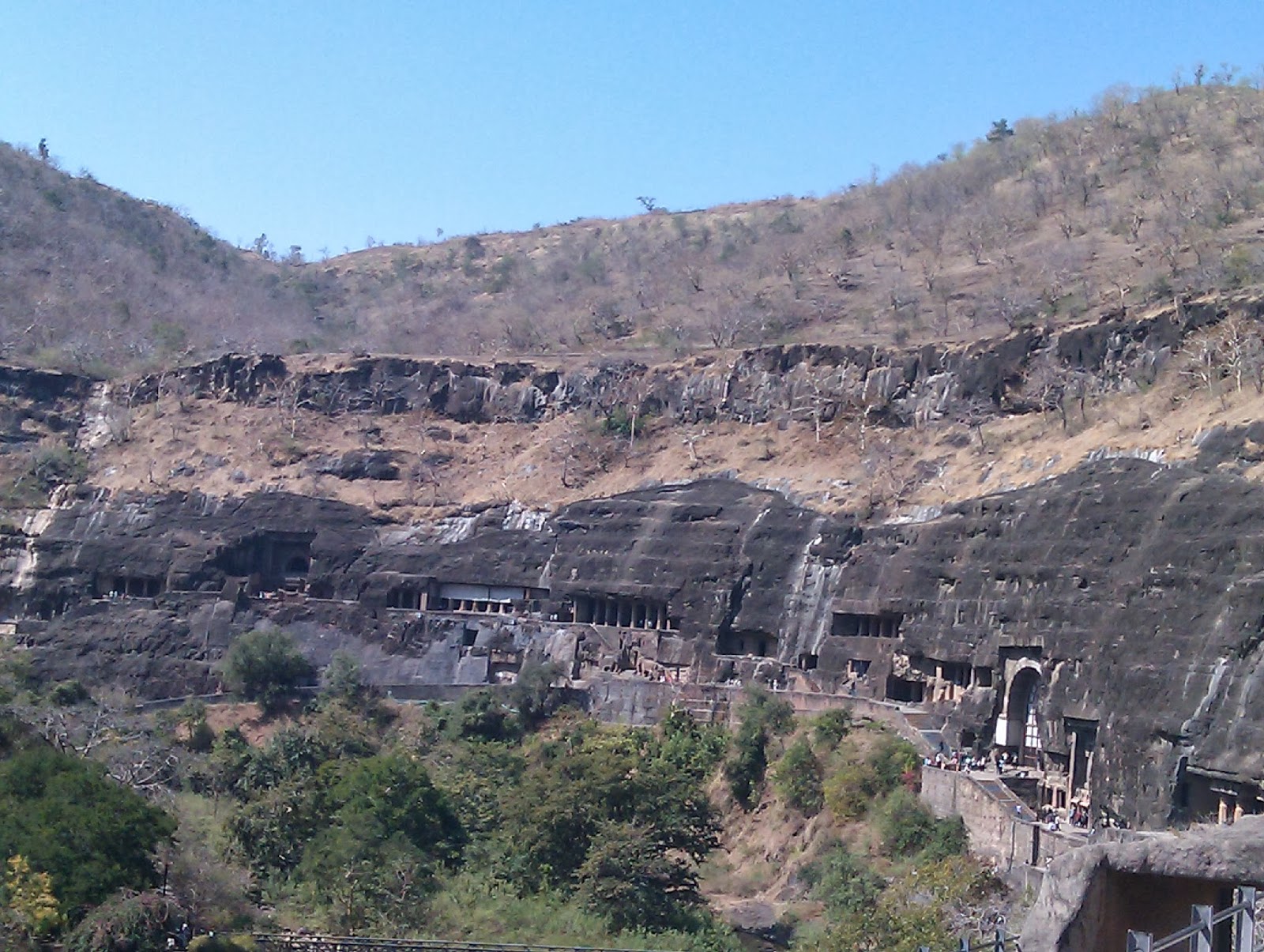After meeting up with Sarah again we spent a few days in Arambol before deciding enough was enough. We waved goodbye to the farm and started our travelling adventure for real. The cows were sad to see us leave.
We started off with a couple of days in Ajuna, which is only about half an hour down the Goan coast. We had a night out at Shiva Valley, but neither of are big trance fans so we decided not to stick around. We got the bus down to Panjim and booked a coach to Pune, which is in Maharashstra just a few hours outisde Mumbai. We had a bit of time to kill so hung around outside the church for the afternoon. I had my guitar and a few wannabe rock stars asked if they could pose for a photo. I was happy to oblige.
Meanwhile Sarah was busy making friends.
And then our time in Goa was up, we boarded the overnight coach to Pune and settled in to our sleeper bunk. After being dumped on the outskirts of town in the small hours we negotiated our way to a hotel in the centre, then headed out for a day trip to Sinhgad, a mountain just a short bus trip away. We got there OK but the bus needed a bit of help making the return journey.
Sinhgad boasts a fort at the top of a mountain, so we hiked our way up in the midday sun. A couple of hours later we were rewarded with a panoramic view of the Maharashstra countryside.
We met plenty of tourists on the way up and if Pune hadn't been enough of a wakeup call it began to dawn on us that Arambol isn't really representative of the rest of India. English isn't as widely spoken everywhere as it is in Goa for a start. European tourists are also a lot rarer so we are getting used to the disbelieving looks.
We hung out in Pune for another day then took the advice of a bloke we met in a park and boarded a bus to Shirdi the next morning.
Pune station at sundown.
Shirdi is a major pilgrimage town as it is the home of Sai Baba, a major figure in Hinduism. He lived here in the early 20th century and is regarded as a saint or even a living God. We queued for an hour with the thousands of pilgrims that pass through this town every day for a glimpse of the holy idol. We British love a good queue after all (sorry no cameras in the temple). We only stayed one night in Shirdi before boarding a tour bus that would take us to a few more sites of pilgrimage for Hindus, the main one being the Ellora caves, which were cut down vertically into a mountain side and fully deserve their status as a UNESCO world heritage site. There are both Hindu and Buddhist caves here, but our group only had time for the Hindu ones.
Kailisya Temple at Ellora
Indian selfie
Sarah making friends again
After Ellora our tour finished in Aurangabad, a small town that acted as a base for another spot of cave dwelling the next day, this time the Ajanta caves which lie about two hours further North.
These Buddhist caves are cut horizontally into the mountainside, used for shelter during the monsoons. They lay undiscovered for centuries after the civilisation that built (cut?) created them suddenly collapsed. There are paintings inside some of them that date back to the second century BC (this one isn't that old though, it dates from the 5th century AD so is comparatively recent)
The caves are supported by intricately carved pillars, I thought I saw one slipping so stepped in until they could arrange a more permanent support.
After a troglodicious couple of days it was time to wave goodbye to Aurangabad, but we had a day to kill before our bus to Ahmedabad was leaving, so we grabbed a spot of breakfast for heading off to - the Aurangabad caves!
This is a smaller set of Buddhist caves just outside Aurangabad, nowhere near as exciting as Ajanta or Ellora, but at least we had them to ourselves.
It was almost time to board our bus, but Sarah found time to make a few more friends so hailed a passing auto-rickshaw.
And with that we were off to Ahmedabad in the state of Gujarat.
















No comments:
Post a Comment